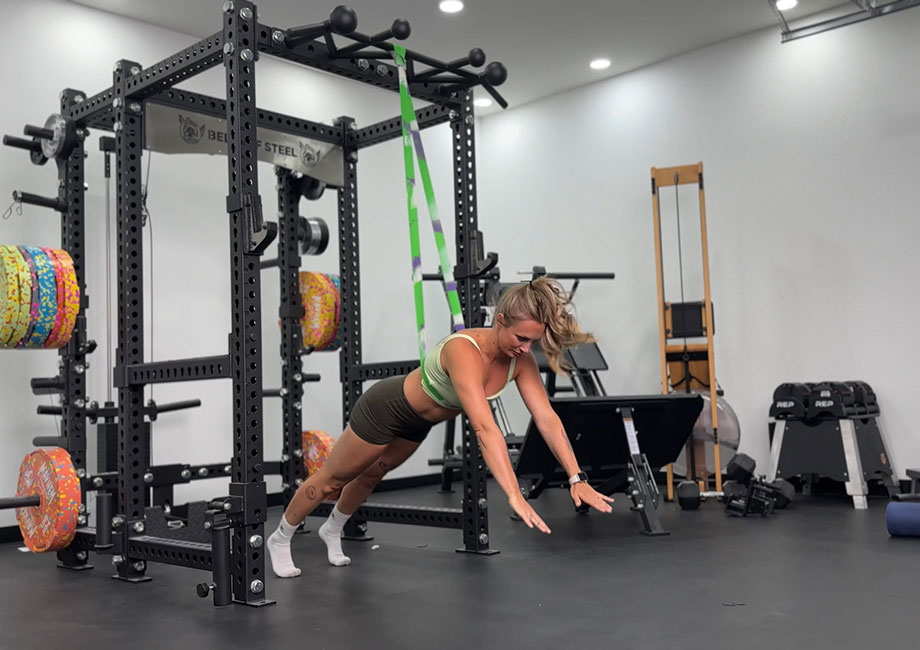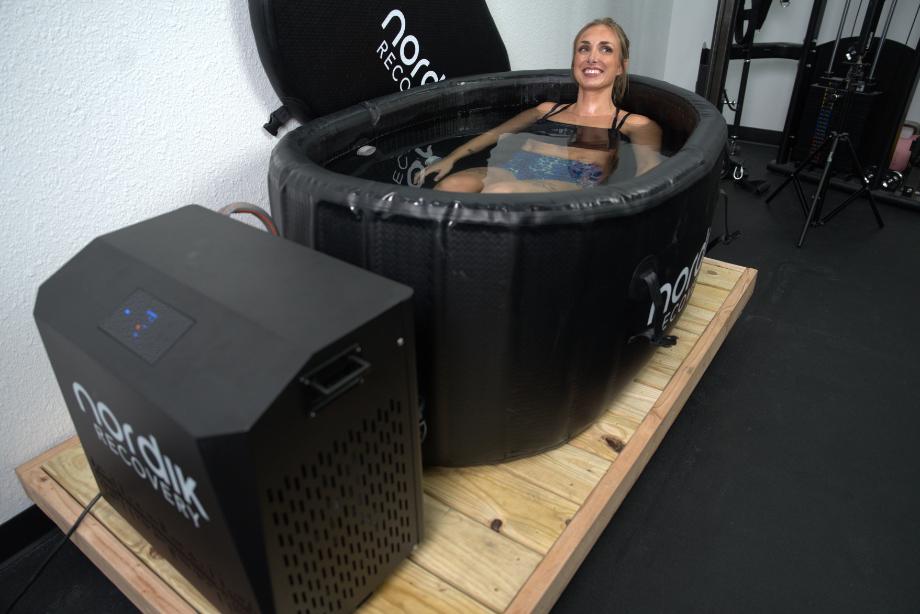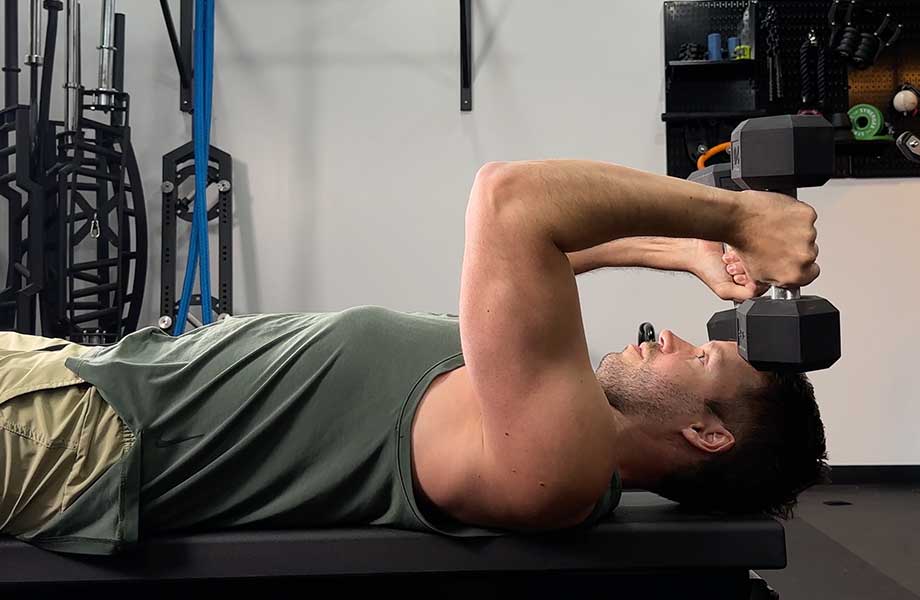Push-ups are like potato chips: not in that they’re super bad for your health—because push-ups are very good for your health and fitness—but that you can’t stop at just one. Seriously, doing high-rep sets of push-ups is convenient and effective. You can make some major improvements in upper body strength and power without touching a piece of equipment or even leaving the house. That’s a win-win!
Also, like potato chips, the varieties are endless. You’ve got the standard push-up, the close-grip or diamond push-up, wide push-ups, incline or decline push-ups—the list goes on!
Today, we’re honing in on a high-intensity push-up variation that can give you some serious results. That’s right; we’re tackling the plyo push-up with a tutorial from Caine Wilkes, OLY, USAW-L1, and GGR senior staff writer.
How To Do a Plyo Push-Up
“The plyometric push-up, when done with proper form, provides activation throughout your entire body, although it is primarily an upper-body exercise,” says Caine. “Exploding out of the bottom of the push-up trains your fast-twitch muscle fibers, which translates to sprinting, Olympic weightlifting, and other high-intensity sports.”
How to do it:
- Start in the quadruped (all fours) position. Place your hands on the floor so that they’re shoulder-width apart, then step your feet back to enter a push-up position.
- Tighten your core, engage your glutes, and lower yourself toward the floor, leading with your chest, by bending your elbows.
- Continue until your chest lightly touches the floor.
- Push through your hands and extend your elbows with force to explode from the bottom position. You want enough momentum for your hands to leave the floor at the top position.
- Land softly and cycle into the next rep.
- Repeat for reps.
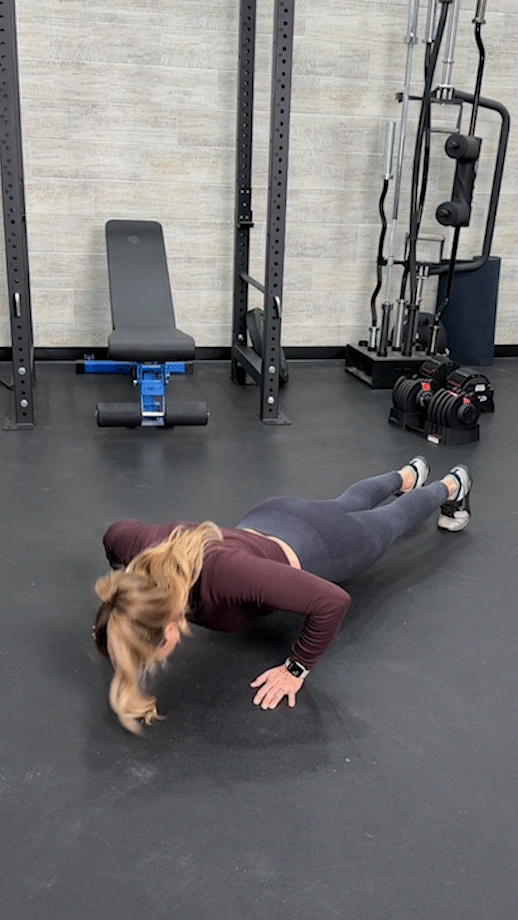
Modifications
- Dial it back: Returning to regular push-ups will build the upper-body muscles needed to progress to plyometric push-ups. You may also practice exploding from the bottom of your push-up without leaving the floor, so you’re getting used to producing force during the eccentric phase, or you can use one of the best resistance bands for assistance.
- Make it harder: There are tons of ways to make this move even more lethal. You could perform each rep from a dead stop to take out all momentum, add one of the best weighted vests, or, if you’re really up for a challenge, you can always try the Superman push-up, which involves leaving the floor completely with each rep.
How To Do the Plyo Push-Up At Home
One of the best things about push-ups and their variations is that you don’t need any equipment. All you need is enough floor space, and you’re good to go!
Plyo Push-Up Variations
Depending on whether you want to progress or regress your plyo push-up, there are a few variations to consider:
Clapping Push-Up
The plyo push-up tasks you with getting more hands-on for each rep. Use your air-time to add a clap after pushing yourself off the ground, and voilà—that’s a clapping push-up!
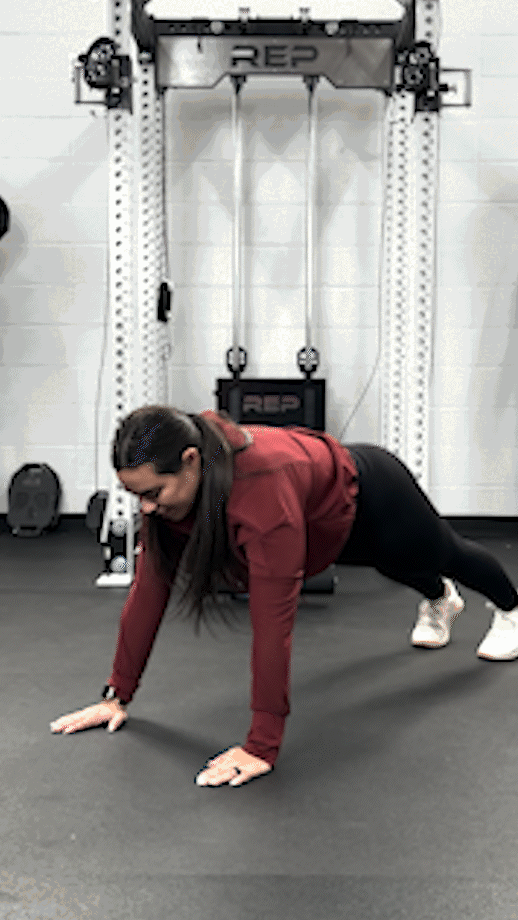
Band-Assisted Plyo Push-Up
Stretch a resistance band across your chest. You can accomplish this by securing it to an anchor point above you or, if you have a power rack, looping one end around the top and the other around your upper chest. Then, do your plyo push-ups per usual; the band will assist during the eccentric phase to make this movement a touch easier. Use progressively less resistance as you advance.
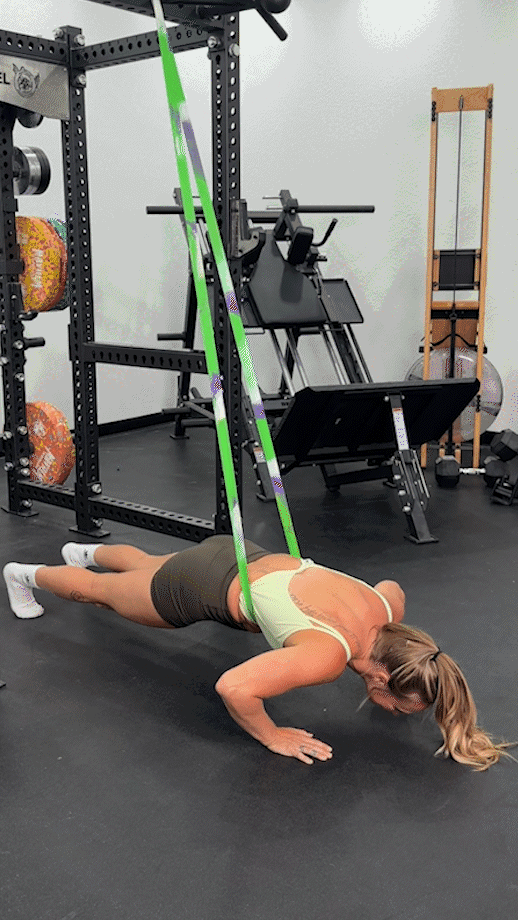
Deficit Plyo Push-Up
Increasing the range of motion is often effective. The plyometric push-up is no exception. You don’t need a huge deficit; a pair of the best bumper plates for your hands should do the trick to increase the ROM just enough.
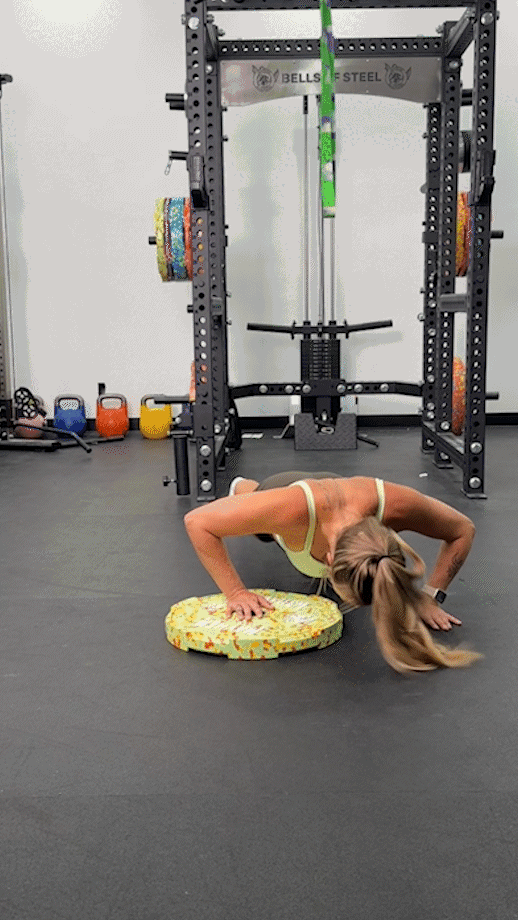
Plyo Push-Up Alternatives
This explosive movement is sure to help you build muscle, strength, and power throughout the entire body, but it can’t be the only exercise in your strength training program. No worries; we’ve listed a few plyo-push-up alternatives to help elevate your game. Check ‘em out!
Banded Bench Press
Why do it: The Journal of Strength and Conditioning Research1 found that push-ups and bench presses involve basically the same muscle groups and may produce similar strength gains. Adding a resistance band to your bench increases the resistance in the eccentric phase and in the top position, which may be useful for breaking plateaus and—you guessed it—boosts your explosive power.
How to do it:
- Adjust the J-hooks of your rack to the right height for you, rack and load a barbell to the desired weight, and place a flat weight bench beneath the bar.
- Wrap a resistance band around each end of the barbell and anchor them at floor level. (Some racks have pins for this, but a pair of the best dumbbells can work in a pinch.)
- Lie down on the bench and unrack the bar over your chest.
- Bend your elbows to lower the bar toward your chest.
- Continue until the bar lightly touches your chest.
- Press the bar back to the top position by explosively extending your elbows.
- Repeat for reps then rerack the bar before repeating the set.
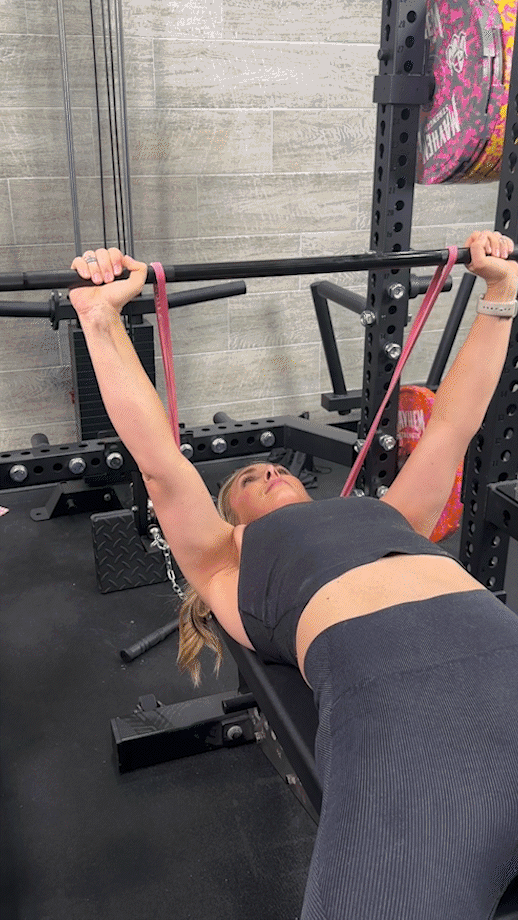
Smith Machine Bench Press Throw
Why do it: “Beginners may balk at the idea of throwing a barbell, but the Smith machine makes sure things don’t literally go off the rails,” says Caine Wilkes, OLY, USAW-L1. “The basic idea is that, through generating enough force to throw the bar, you’re training your fast-twitch muscle fibers, which may translate to greater power, coordination, and athletic ability.”
How to do it:
- Set up your Smith machine so the bar is at a good height for you, load your barbell, and lie down on a flat weight bench under the bar.
- Unrack the bar over your chest.
- Slowly lower the bar to your chest, lightly touching at the bottom.
- Press the bar upwards by explosively extending your elbows and “throw” the bar by releasing it at the top.
- Catch the bar in the top position and reset.
- Repeat for reps then rerack the bar.
RELATED: Smith Machine Vs Free Weights
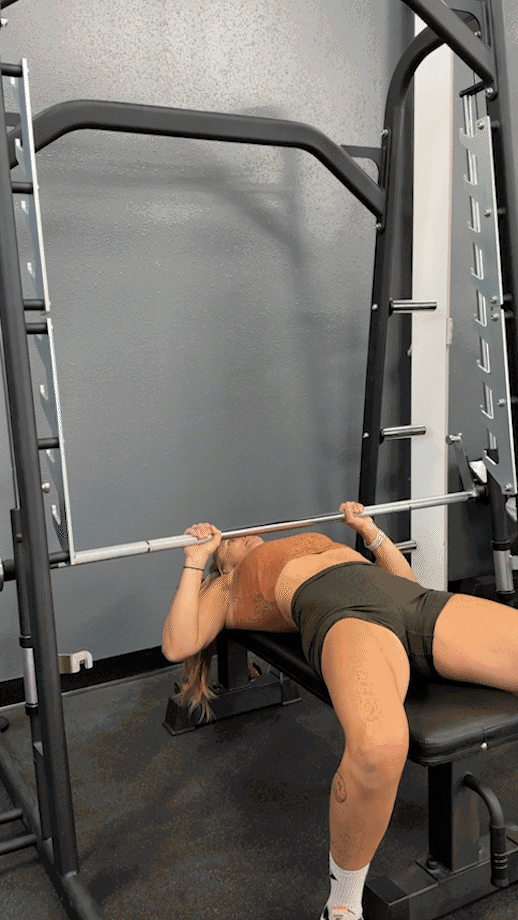
Lying Medicine Ball Chest Throw
Why do it: The lying medicine ball chest throw follows the same principle as the Smith machine bench press throw, but it may seem less daunting. That doesn’t mean it won’t hurt if you fumble the catch and drop that thing on your face, though. Make sure to focus on the toss and catch to prevent injury.
How to do it:
- Lie on the floor with your knees bent, feet planted, and a medicine ball held with both hands on top of your chest.
- Throw the ball straight into the air (visualize an NBA chest pass).
- Catch the ball and slowly guide it back toward your chest.
- Repeat for reps.
RELATED: Medicine Ball Workouts
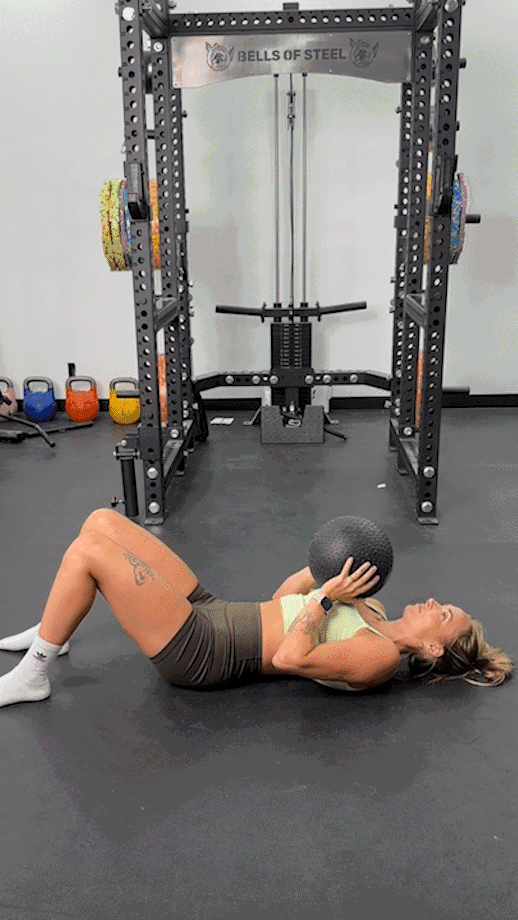
Burpee
Why do it: Burpees were invented as a means of testing physical fitness. Nearly a century later, they’re still used precisely for that purpose. Burpees challenge your cardio, the strength and endurance of your upper- and lower-body muscles, and your ability to produce power.
How to do it:
- Stand with your feet shoulder-width apart.
- Hinge forward from the hips, bend your knees, and place your hands on the floor.
- Jump or step your feet back to enter a high plank position.
- Lower your body to the floor completely.
- Push yourself back into the plank position, jump or step your feet back to center, and return to the starting position by standing up.
- Jump with both feet and raise your arms over your head.
- Land softly, reset, and cycle into the next rep.
- Repeat for reps.
RELATED: What Muscles Do Burpees Work?
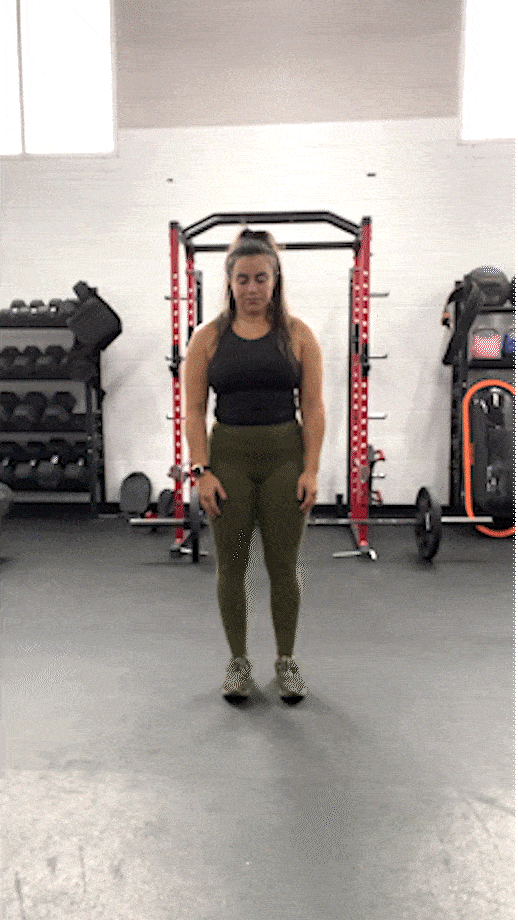
Benefits of the Plyo Push-Up
Plyo push-ups are super convenient as they’re a dynamic bodyweight exercise that requires no equipment to perform, possibly one of the reasons they’re so popular on fitness social media. Plus, you can associate tons of perks with performing them on the reg.
Here are some of the key callouts of plyometric training.
Can Help Enhance Your Athletic Performance
Perhaps the primary benefit of incorporating plyo push-ups and plyometric exercises, in general, into your training is their potential to amplify your physical abilities—power, especially.
A 2023 umbrella review published in Sports Medicine – Open2 outlined these benefits, concluding that “plyometric training [may] induce trivial-to-large effects on physical performance for healthy people, and enhanced performance for athletes from different sports.” That includes increases in strength, muscle mass, endurance, power, speed, coordination, and more.
May Help Improve Your Health and Wellness
A study published in Applied Physiology, Nutrition, and Metabolism3 observed some major health improvements following a 12-week plyometric training program combined with HIIT.
These improvements ranged from anthropomorphic, including “body mass, [BMI]…body fat, lean body mass, and waist circumference,” to biochemical, like “plasma glucose, insulin, leptin, and adiponectin concentrations, leptin/adiponectin ratio, and homeostasis model assessment of insulin resistance,” to physical, such as “peak oxygen uptake, velocity at peak oxygen uptake… and energy intake.”
Can Lead to a Better Bench Press
Push-ups often work as a worthy substitute for the barbell bench press since both movements primarily target your pectorals and triceps muscles. The plyo push-up is especially effective as a bench press stand-in due to its explosive nature.
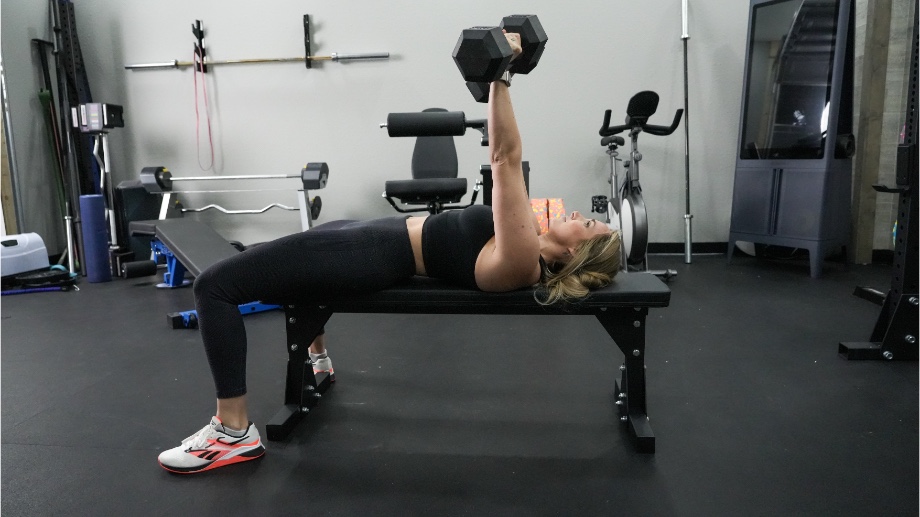
A 2020 study in the Journal of Human Kinetics4 “demonstrated that plyometric push-ups lead to performance enhancement of the bench press exercise” by observing improvements to various factors, like “peak power output, mean power output, peak bar velocity, and mean bar velocity.”
So, don’t sweat it if you’re into bodybuilding or powerlifting and life keeps you from getting your mitts on a barbell; you can still work towards improving that bench press using the plyo push-up!
Common Plyo Push-Up Mistakes
You’ll want to include plyo push-ups in your calisthenics training or strength training programs that make good use of bodyweight exercises, but it’s important to make sure you’re doing them correctly before you rack up the reps.
Here are a few common mistakes beginners make when learning how to do plyo push-ups.
Raising or Sagging Your Hips
The ideal body positioning involves forming a straight line from the top of your head to the bottom of your feet. That’s the perfect push-up position. You can achieve this with a strong upper body and excellent core strength.
“Bracing the abdominal muscles helps keep your torso rigid, which protects the spine and allows you to maximize your power output,” says Caine. “Letting your hips rise or fall takes you out of alignment, which, in turn, may lead to pain or injury.”
Avoid this pitfall by not overdoing the number of repetitions, and make sure you’re tackling sets that let you do each plyo push-up with perfect form. Working on your core strength and stability also can’t hurt.
Not Using a Full Range of Motion
A full push-up rep involves starting with your elbows fully extended, lowering your body to the point where they’re fully flexed, then extending them again to get back into the high plank. Anything less is cheating.
The same goes for plyo push-ups. You basically want to go all the way down to the floor, touching your chest, before exploding from the bottom and launching into the air. Shortening this range of motion isn’t just improper form; it also diminishes the amount of work you’re doing per rep, which will provide commensurately less results.
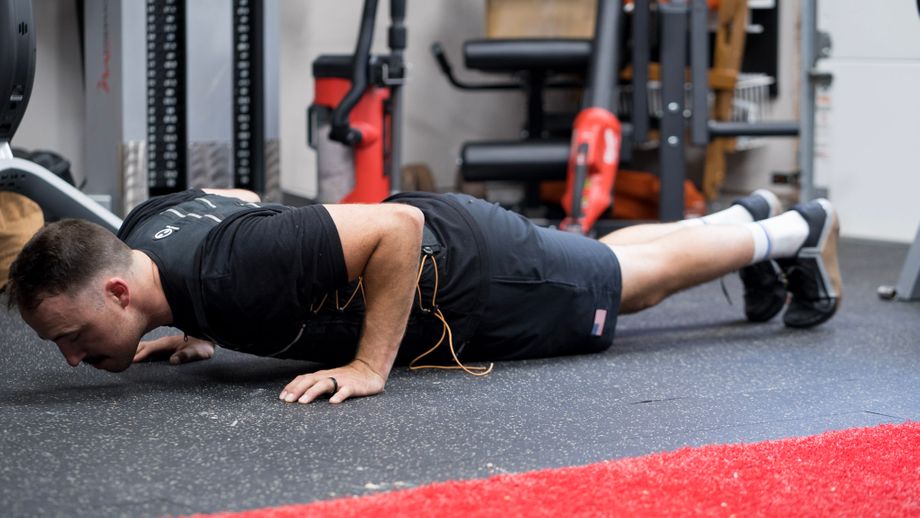
So, don’t cheat your reps. You’ll only wind up cheating yourself!
Using Too Much Momentum
It’s difficult, if not impossible, to cheat the eccentric phase of the plyo push-up because—let’s not mince words here—you can either push yourself up and into the air or you can’t. However, momentum and gravity will do your job just fine during the concentric phase if you let it. Don’t!
Lower yourself with control to maximize your time under tension and reap the most reward. The exercise will be more exhausting, but that’s a good thing!
Muscles Worked by the Plyo Push-Up
The plyo push-up is a push-up variation at its core, which means it targets the same muscle groups as the tried-and-true push-up. Those muscles include:
- Pectorals: Consider the pectoralis major the prime mover for push-ups because it controls the arm when extended in front of the body. Plus, the pec major is the largest of the chest muscles, making it integral for producing force during standard and plyo push-ups.
- Triceps: The triceps brachii are also critical when it comes to push-ups. That’s because this massive upper-arm muscle is in charge of flexing and extending the elbow, and you need those two movements to physically perform (literally) any push-up variation.
- Deltoids: These shoulder muscles stabilize the shoulder joint, which keeps you safe from injury when you push yourself off the floor and come crashing down.
- Abdominals and glutes: These muscle groups are the unsung heroes of the movement. Your core keeps your torso stiff and rigid, protecting your spine, while the glutes make sure your hips stay in alignment.
RELATED: What Muscles Do Push-Ups Work?
Plyo Push-Up: Final Thoughts
It’s astounding how much work you can get done with simple bodyweight exercises like air squats, pull-ups, and—of course!—push-ups. There are seemingly endless push-up variations, but the plyo push-up is among the most effective because:
- They build strength, muscle mass, power, endurance, and speed
- They don’t require equipment
- They burn tons of calories
- They may offer various enhancements to your health and well-being
- They translate to an improved bench press performance and potentially boost athletic power
So, what do you say? Are you ready to try-o a little ply-o?
Plyo Push-Up: FAQs
What does plyo stand for?
Plyo is the common abbreviation for plyometric. Plyometrics is defined as “exercise involving repeated rapid stretching and contracting of muscles (as by jumping and rebounding) to increase muscle power.”
The key words here are “rapid stretching and contracting” because, unlike regular isotonic exercise, the requisite is that you are rapidly performing the movement. It’s about explosivity, so stuff like sprints, box jumps, burpees, and plyo push-ups would fit the criteria.
RELATED: Best Plyometric Exercises
Do explosive push-ups increase speed?
A 2021 study5 published in the Journal of Strength and Conditioning Research found that an eight-week plyometric training improved “linear speed, power, and change-of-direction speed [and] repeated sprint ability.” So, yes, explosive push-ups may be beneficial for increasing speed.
Do plyo push-ups make you punch harder?
Yes, they can. A 2016 study6 in the Journal of Strength and Conditioning Research found a “strong association” between “selected strength and power variables,” most of which were developed by performing plyometric exercises regularly and punching impact.
It makes total sense when you think about it. Both actions require explosively extending your elbows and producing high quantities of force. So, it stands to reason that if you’re doing plyo push-ups often, throwing a punch may start to feel more intuitive.
RELATED: Boxing Workouts
References
- Calatayud J, Borreani S, Colado JC, Martin F, Tella V, Andersen LL. Bench press and push-up at comparable levels of muscle activity results in similar strength gains. J Strength Cond Res. 2015;29(1):246-253. doi:10.1519/JSC.0000000000000589
- Kons RL, Orssatto LBR, Ache-Dias J, et al. Effects of Plyometric Training on Physical Performance: An Umbrella Review. Sports Med Open. 2023;9(1):4. Published 2023 Jan 10. doi:10.1186/s40798-022-00550-8
- Racil G, Zouhal H, Elmontassar W, et al. Plyometric exercise combined with high-intensity interval training improves metabolic abnormalities in young obese females more so than interval training alone. Appl Physiol Nutr Metab. 2016;41(1):103-109. doi:10.1139/apnm-2015-0384
- Krzysztofik M, Wilk M. The Effects of Plyometric Conditioning on Post-Activation Bench Press Performance. J Hum Kinet. 2020;74:99-108. Published 2020 Aug 31. doi:10.2478/hukin-2020-0017
- Chaabene H, Negra Y, Moran J, et al. Plyometric Training Improves Not Only Measures of Linear Speed, Power, and Change-of-Direction Speed But Also Repeated Sprint Ability in Young Female Handball Players. J Strength Cond Res. 2021;35(8):2230-2235. doi:10.1519/JSC.0000000000003128
- Loturco I, Nakamura FY, Artioli GG, et al. Strength and Power Qualities Are Highly Associated With Punching Impact in Elite Amateur Boxers. J Strength Cond Res. 2016;30(1):109-116. doi:10.1519/JSC.0000000000001075




